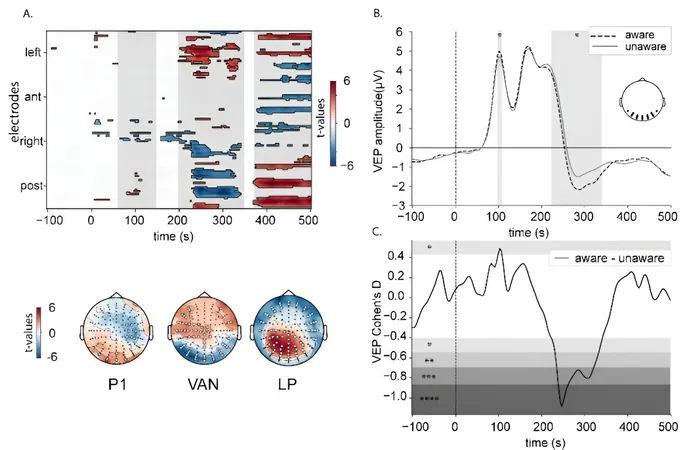
Unveiling the Surprising Connection Between Breathing, Heartbeat, and Visual Perception
2024-09-19
A groundbreaking new study from the University of Fribourg has uncovered powerful links between our bodily rhythms and brain function, revealing how our breathing and heartbeat influence visual perception in ways that were previously unrecognized.
Psychologist and neuroscientist Juliane Britz led the research, demonstrating through her experiments that both cardiac and respiratory rhythms significantly affect our awareness of visual stimuli. Published in the prestigious Proceedings of the National Academy of Sciences, this study sets the stage for a revolution in how we understand consciousness.
Breathing for Clarity: The Science of Visual Awareness
In the experiment, participants were shown gray squares that appeared briefly on a screen, either cross-hatched in one direction or the other. They were then questioned on their awareness of the patterns and their orientation. The design ensured that participants consciously perceived the stimuli only about 50% of the time. Astonishingly, they correctly identified the orientation 85% of the time, indicating that they often processed the visual cues subconsciously!
To gain deeper insights, researchers utilized electrodes to monitor brain activity (via electroencephalogram), heart electrical activity (electrocardiogram), and even breathing patterns with a belt measuring abdominal volume. The results revealed that the timing of the visual stimuli relative to cardiac and respiratory events played a crucial role in how and when they became conscious to the participants.
The Heart's Hidden Influence on Consciousness
The study found that when images appeared during a relaxed heart state, the onset of conscious awareness occurred approximately 150 milliseconds sooner than when the heart was contracting. A similar pattern was observed with respiration; images shown during exhalation led to quicker conscious recognition than those shown during inhalation.
Juliane Britz explains, “This influence stems from pressure receptors in the arteries, which remain inactive during relaxation or inhalation but activate during heart contractions and exhalations. This creates a bottleneck in neuronal processing, delaying visual stimulus awareness.”
Two Paths to Conscious Realization
A particularly notable outcome of this research is the identification of two distinct neural pathways leading to consciousness, depending on bodily signals. Traditionally, it has been accepted that visual information passes through the visual cortex and then on to other brain areas before reaching conscious thought. However, Britz's findings illustrate that when bodily signals are present, consciousness processing shifts through the parietal cortex; without these signals, it routes through the frontal cortex.
This dual-pathway revelation not only bridges longstanding debates within the neuroscience community about where consciousness originates but also highlights the interconnectedness of our body and brain.
A Call for a Holistic Neuro-Approach
Britz emphasizes the importance of moving away from a purely “brain-centered” perspective. She argues for the inclusion of bodily signals in neuroscience, as they provide critical insights into the processes of awareness. “The brain does not operate in a vacuum; it is profoundly influenced by the body,” she asserts.
These vital findings challenge conventional notions and suggest that what we consider 'noise' in bodily signals is, in fact, critical information that could offer new pathways for understanding consciousness.
In a rapidly evolving field, this study serves as a pivotal reminder that the heart and lungs are not just organs but integral to our cognitive processes. As we continue to explore the relationship between body and brain, who knows what other astonishing discoveries await? Stay tuned for more revelations in the world of neuroscience!

 Brasil (PT)
Brasil (PT)
 Canada (EN)
Canada (EN)
 Chile (ES)
Chile (ES)
 España (ES)
España (ES)
 France (FR)
France (FR)
 Hong Kong (EN)
Hong Kong (EN)
 Italia (IT)
Italia (IT)
 日本 (JA)
日本 (JA)
 Magyarország (HU)
Magyarország (HU)
 Norge (NO)
Norge (NO)
 Polska (PL)
Polska (PL)
 Schweiz (DE)
Schweiz (DE)
 Singapore (EN)
Singapore (EN)
 Sverige (SV)
Sverige (SV)
 Suomi (FI)
Suomi (FI)
 Türkiye (TR)
Türkiye (TR)